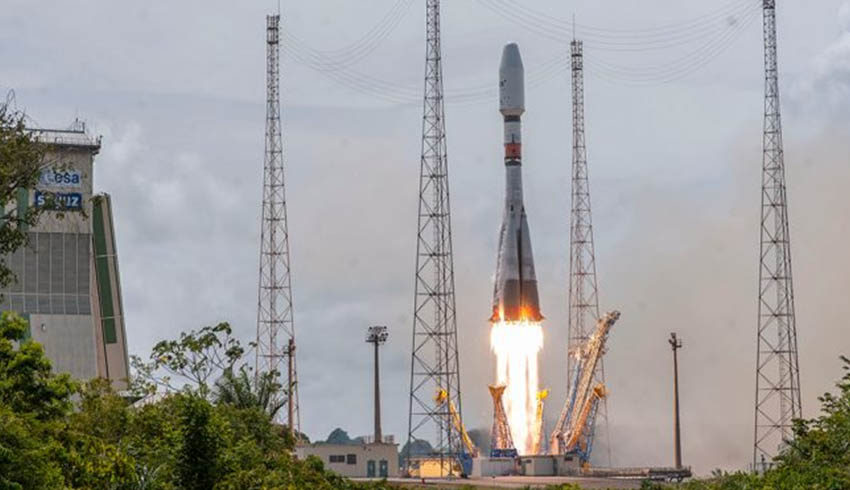
Designated Flight ST29 in Arianespace’s launcher family numbering system, will be the fourth for OneWeb. A total of 74 satellites were delivered by Arianespace into low Earth orbit for the connectivity constellation on two missions earlier this year and one in 2019.
OneWeb’s goal is to bring connectivity to everywhere where fiber cannot reach, delivering high-speed, low-latency connectivity services to a wide range of customer sectors – including aviation, maritime, backhaul services, and for governments, emergency response services and more.
The dispenser system for Flight ST29 is filled to capacity with the cluster of 36 OneWeb spacecraft. RUAG Space AB of Linköping, Sweden is the prime contractor for this dedicated dispenser’s development and production, with the capacity sized to enable Arianespace’s delivery of OneWeb’s initial constellation spacecraft in a timely manner.
For the Arianespace/Starsem mission on 18 December, the Russian-built Soyuz will release its satellite passengers in nine deployment sequences during a mission lasting just under 3 hours, 52 minutes. Total payload lift performance for Soyuz is set at 5,810 kilograms, which includes the spacecraft, their dispenser and integration hardware.
The Soyuz 2-1b launcher version utilised for Flight ST29 is the result of a joint European/Russian upgrade program, adding a more powerful third stage engine that significantly increases the launcher’s overall performance.
As a member of the modernised Soyuz-2 series, it features a digital control system that provides additional mission flexibility and also enables control of the launch vehicle fitted with the enlarged 4.1-metre-diameter ST payload fairing.
This mission’s Soyuz is equipped with a re-ignitable Fregat upper stage, which is routinely used on Arianespace missions to extend the launcher’s capability. For the upcoming OneWeb deployment, the Fregat stage will perform multiple reignitions/propulsion burns while delivering the OneWeb satellites into a near polar orbit at an altitude of 450 kilometres. After completion, the upper stage is to make a final burn for deorbiting.
The spacecraft prime contractor for OneWeb’s constellation is OneWeb Satellites – a joint venture founded by OneWeb and Airbus Defence and Space.
A facility in Florida, USA built the passengers for Flight ST29, with the capacity to complete two spacecraft a day on a series production line dedicated to the assembly, integration, and testing of OneWeb satellites.
Flight ST29 underscores Arianespace’s position as a leading provider of launch services for constellation satellites. Since the late 1990s, it has launched a total of 205 such spacecraft.
In addition to the OneWeb satellites, this involved: 56 for Globalstar; 30 for Planet; 20 for O3b; 12 for Swarm Technologies; eight for Spire; along with one each for Orbcomm, Satellogic, Kepler Communications, Orbital Solutions/GeoOptics and GHGSat.
Additionally, 26 institutional satellites were launched for the European Space Agency (ESA) and the European Commission as part of the Galileo constellation project.
Receive the latest developments and updates on Australia’s space industry direct to your inbox. Subscribe today to Space Connect here.









